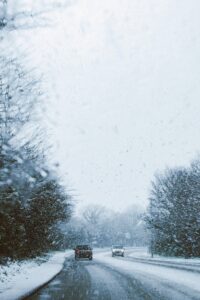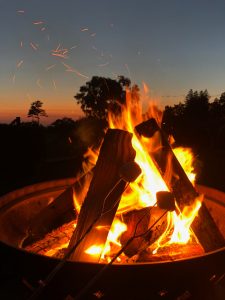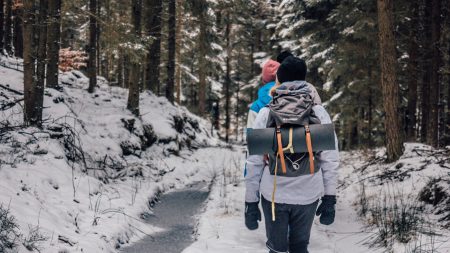
Old Man Winter has arrived and if you haven’t done so already, we recommend brushing up on your winter driving skills as well as your winter driving readiness.
Driving in Bad Weather
• Carpool: two heads are better than one.
• Be alert. Don’t drive when fatigued.
• Allow plenty of extra time for trips.
• Have alternative routes for how you’ll drive from point A to point B. Anticipate worst-case scenarios and prepare for them.
• Make sure your cell phone is fully charged and have the charger handy.
Tips for Readying Your Car
• Keep the gas tank at least half-full when driving in bad weather. You’ll be more prepared for periods of slow driving or when traffic stops altogether.
• Keep your wiper blades in excellent condition to ensure good visibility.
• Make sure your tires have good treads.
• Carry emergency supplies in your vehicle, no matter what the weather. A good emergency checklist includes a blanket, window scraper, flashlight, first-aid kit, shovel, jumper cables, flares, and non-perishable snacks.
Braking and Skidding
• When applying the brakes on a vehicle equipped with conventional brakes, avoid locking them by pumping.
• For vehicles equipped with anti-lock brakes, apply the amount of brake pressure needed and don’t pump the brakes.
• To avoid skidding, stay within the speed limit, and, in poor weather, slow down. Keep adequate distance between your vehicle and others.
• Slow down before entering turns or bends, steering steadily.
• While on icy or slippery roads, don’t brake heavily or jerk the steering wheel.
Snow, Ice, or Mud Conditions
• If your car is stuck in snow, ice, or mud, proceed carefully. Acceleration that is too rapid will spin the wheels and only dig the vehicle in deeper.
• Try to stay calm and turn the steering wheel gently from side to side to clear snow, ice, or mud away from the wheels. Lightly accelerate forward with the wheels straight ahead, alternating with a slow movement in reverse. This may help rock the vehicle out of its rut.
• Be aware that moisture on overpasses and bridges becomes icy more quickly than on ground-level roads since cold air is beneath these structures.
This is the perfect time of year to investigate ridesharing or mass transit as an alternative for your commute. Contact KMM to inquire about carpool or vanpool matches for your route, and get free mass transit schedules for your area. Why not start commute habits now that will benefit you all year long? It could make for a better commute!

 Nature doesn’t stop when it gets cold outside and neither should you. This Winter, bundle up and get outdoors this winter to discover what Middlesex County has to offer.
Nature doesn’t stop when it gets cold outside and neither should you. This Winter, bundle up and get outdoors this winter to discover what Middlesex County has to offer.
 Although winter comes as no surprise, many of us are not ready for its arrival. Winter storms or other severe weather conditions can cause serious damage. This winter season it is important to think about winter weather approaching and most importantly to be prepared for it. Here are some tips to help you get through the cold this winter:
Although winter comes as no surprise, many of us are not ready for its arrival. Winter storms or other severe weather conditions can cause serious damage. This winter season it is important to think about winter weather approaching and most importantly to be prepared for it. Here are some tips to help you get through the cold this winter: Now that the winter has arrived, temperatures will be dropping and snow will be falling. Whether you’re walking or driving during the winter months, its best to be prepared so you stay safe.
Now that the winter has arrived, temperatures will be dropping and snow will be falling. Whether you’re walking or driving during the winter months, its best to be prepared so you stay safe.
 Now that the holiday season is in full swing, many of us will be checking our lists and heading out to the malls and town centers for holiday shopping. To help you shop safely, we’ve put together some Holiday Shopping tips.
Now that the holiday season is in full swing, many of us will be checking our lists and heading out to the malls and town centers for holiday shopping. To help you shop safely, we’ve put together some Holiday Shopping tips.

